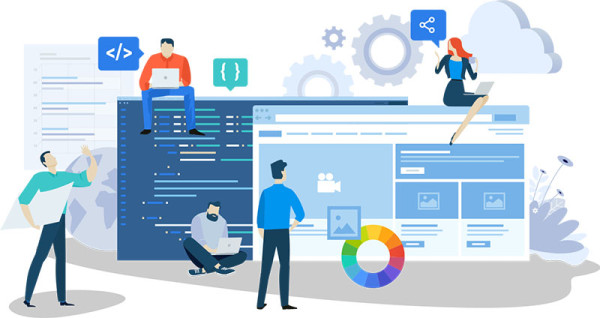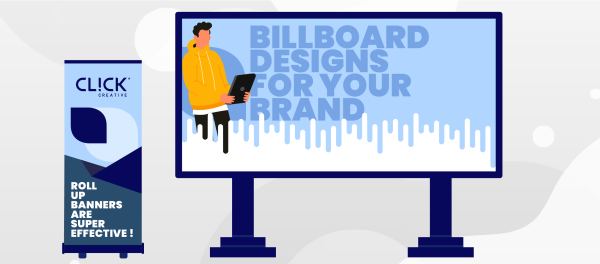Drop us a line and say hi!
Whether you have questions about pricing, features, or anything else, our team is ready to answer all your questions.
In today's fast-paced digital world, the role of marketing collateral has become more complex than ever before. While many predicted that the internet would render printed materials obsolete, savvy marketers are finding innovative ways to integrate traditional tools with digital strategies. It's time to rethink and refresh your marketing collateral approach to capture the attention of your audience, whether they're working from home, the office or scanning multiple devices.
Please note this article was first published in October 2021 and has been refreshed with new, up to date information for relevance and your enjoyment.
As marketing professionals, our goal is to deliver the right message to the right audience at the appropriate stages of the customer journey. Different audiences require different types of marketing collateral. Let's explore some old and new ideas to generate leads, promote products, convert new customers, and re-engage lost or abandoned leads.
The most crucial aspect to remember is that every piece of marketing collateral should effectively communicate your company's message, brand tone, color scheme, and style.

At Click Creative, our creative agency Melbourne team utilises a wide range of tools to create and assemble the collateral necessary for your business to thrive in today's noisy marketplace. We believe that finding the right combination of physical and digital efforts will provide a significant boost to your business. Here's what we've been delivering to our clients with proven results.
Despite the rise of eCommerce and social channels, there is still a place for custom print collateral that connects with people offline. Print collateral encompasses various materials such as business cards, flyers, brochures, magazines, and annual reports. Take a moment to look at your fridge or junk drawer, and you'll find examples of print collateral in your own home. This illustrates the enduring relevance of print in marketing.
To achieve optimal results, businesses still need a mix of online and offline marketing collateral to nurture prospects through different stages of the buyer journey. Having relevant collateral tailored to your niche increases the chances of hitting the mark.
Statistics show that more than 75% of brands use marketing collateral to strengthen their brand presence.
Printed brochures combined with digital elements offer a powerful way to reach and engage different audiences. While digital oversaturation has made us appreciate well-crafted print materials, brochures have evolved into digital resources that can be easily shared across platforms. By using the same tools to create both online and offline content, you can ensure consistent branding and messaging.
The key to success with brochures lies in having both digital and print versions (perhaps utilising QR codes as the team at Click explored last month), educating your audience, keeping your call-to-action (CTA) message simple, maintaining consistent brand positioning, and using graphics and images to convey information.
One effective way to turn existing customers into brand advocates is by offering great SWAG (promotional merchandise). By thinking outside the box and providing freebies that people talk about and use regularly, your brand gains exposure and leaves a lasting impression. Effective marketing collateral makes it easier to close sales and streamline your marketing efforts.
Here are the top trends for 2023 in the promotional products space:
You can find an extensive list of providers and products through APPA (Australasian Promotional Products Association), our client, whose members in the promo merchandise industry offer a wide array of product options that can all be branded to suit your merchandise requirements.
Traditional annual reports delivered as PDFs and thick magazines tend to be dry and lack engagement. However, organisations can now create interactive and visually appealing digital reports using online content platforms. These reports can include interactive charts, infographics, and visual aids to present numerical data effectively. By making reports responsive and viewable on different devices, accessibility is improved while potentially reducing the environmental impact of printing.
As a business, you should be giving persuasive and activating presentations that represent your work. Getting attention isn't terribly difficult. Keeping it, however, certainly is. Whether you're presenting to a prospective client or before a panel of potential investors, your goal is the same - inspire your audience. Inspiring trust leads to conversions and more business.
Here are the keys to creating a great presentation:

Outdoor signage remains a cost-effective and high-return marketing strategy that targets various demographics. It is non-intrusive, drives traffic, and can be personalised to your brand. Consider the following options:
Every landing page needs to be designed to achieve a specific business objective. The key assets may be similar between pages and platforms, but each will speak to a different audience, at a different stage of the customer journey with a different purposeful call to action.
Here are some of the elements we use to maximise the success of a landing page for your next advertising or marketing campaign:
A pillar page is a high-level piece of website content that covers a core topic relevant to your business and links out to other related articles on subtopics. Similar to a comprehensive resource or long-form writing, a pillar page provides informative and detailed educational content that helps customers understand the mechanics or underlying principles of what you do. Having pillar content on your website serves as a valuable resource, building authority and showcasing your depth of knowledge and expertise, and can also be repurposed as part of an ebook or white paper.
Blogs continue to be a powerful tool for driving traffic, improving website SEO, promoting products and services, and building trust throughout the customer journey. Use blogs to create awareness at the top of your funnel, educate your audience, and establish credibility. Follow up with automated drip email marketing sequences to nurture leads and convert them into customers.
Here are the guidelines for using your blog as an effective marketing tool:
Keep blog posts concise and focused. Aim for 700-1500 words to effectively convey your brand's message.
Include a strong call to action to guide your audience's next steps.
Automate your blog with RSS feeds and worfklow email sequences for consistent content delivery.
Incorporate high-quality videos and images to enhance engagement.
Creating an ebook is an effective way to position yourself as an expert in your niche while providing a valuable resource for your customers. Use ebooks at the top of your funnel as lead magnets, offering valuable content in exchange for email addresses.
Repurpose your ebooks into smaller technical content pieces, whitepapers, and automated email flows to continue engaging your audience. Ensure your design is visually appealing, your content is valuable, and your brand position is strengthened.
While hosting big conferences may not be feasible for everyone, event magazines are still a great way to access new audiences, particularly when they are dedicated to the subject of the specific event.
Use event magazines to highlight conference details, speaker information, schedules, and provide great content aligned with the topics, keynote sessions, and industry news. Give readers multiple reasons to refer back to your magazine as an informative, educational, and entertaining publication. Don't forget to offer a digital version that can be downloaded or viewed online through gated content, allowing for a mutual exchange of email for valuable content.
Research has shown that humans are better at processing visual information than text. Infographics are an effective way to express and explain complex ideas and data visually. An infographic can include illustrations, graphs, data, or a combination of these elements. They work well as standalone content pieces or as part of a larger body of work. Infographics are particularly suited for social media channels, where they can quickly convey a point.
Quality video content continues to be an invaluable marketing tool with exceptional return on investment. With over 50% of people watching at least one video per day, incorporating videos into your marketing strategy is essential. Video content can engage users immediately and lead to increased time spent on your website.
Case studies are an excellent way to showcase your company's success stories. Typically consisting of challenge, solution, result, and testimonial sections, case studies demonstrate how you achieved successful outcomes for your clients.
Share and repurpose client results through:
Highlighting skills, capabilities, and deliverables
Presenting data and analytics
Providing proof of concept and product effectiveness.
View some of the Click Studio's most recent case studies here:
Darren Jones
The Botanical Group
Suzuki Marine

Imagine being able to transport your audience to a different time, place, or even a fictional world where they can fully experience your brand. VR allows you to do just that. By incorporating VR into your marketing collateral, such as product catalogs, brochures, or even trade show displays, you can provide your customers with virtual experiences that simulate real-life interactions. Whether it's allowing them to explore a virtual showroom, try on virtual products, or visualise the features of a complex product, VR enables you to transport your audience and create a sense of immersion that traditional collateral simply cannot match. Some of the ways you can incorporate VR intp your strategy are:
Augmented reality (AR) technology has seen significant adoption by large retailers like Google and Amazon. Personalised shopping experiences offered by brands such as Ikea, Bobbi Brown, and Kellogg's allow consumers to virtually test products before making purchases, minimising the need for returns.

Interactive content, including AR, has been proven to grab audience attention. It's essential to leverage these technologies to enhance the online shopping experience and create engaging interactions.
Now that you’re equipped with knowledge of every marketing collateral type you need, you can own your entire marketing communications suite and create any collateral to keep both new and existing customers coming back to you. Unless, of course, you'd like a little help from our Digital Agency Melbourne team.
Since we’ve discussed the future of web-based content in the above section, you’re already one step ahead of most marketers out there. So why not start by creating some collateral with us?